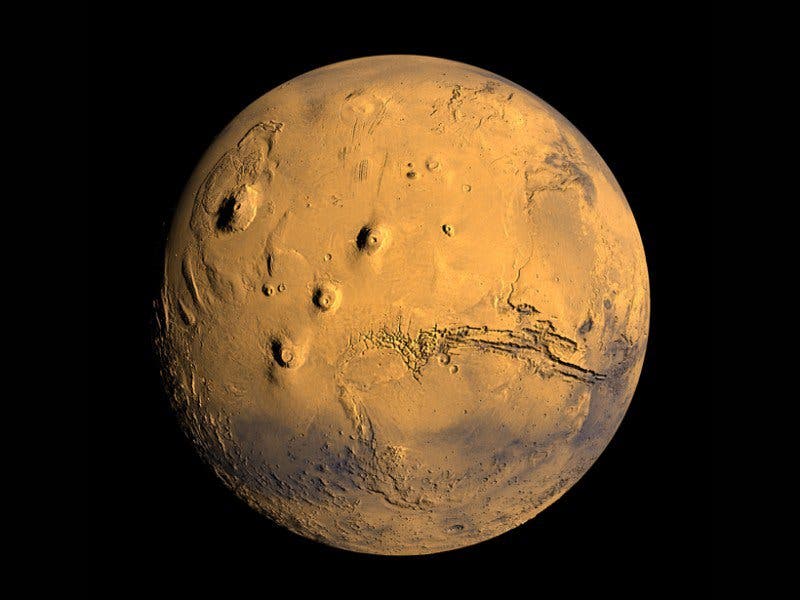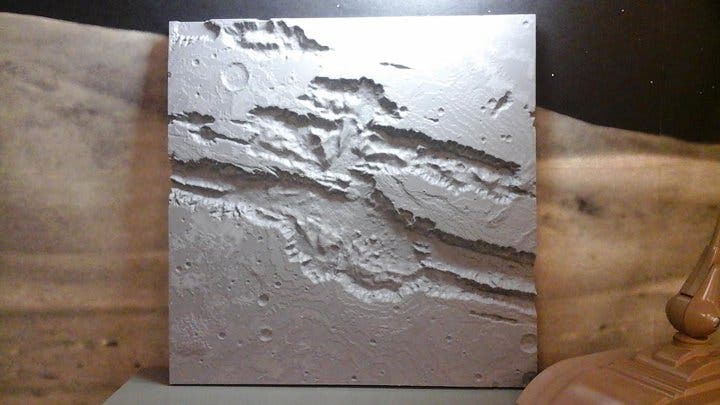3D printing has not only opened amazing new possibilities for human (and animal) medicine, engineering and even art, but it has ignited our imagination and pushed us to think about things in new, different ways. At the poster presentation at the annual Geological Society of America (GSA) conference in Baltimore, two scientists have presented 3-D models of impact craters on the Moon and Mars, as well as of Mars’s Valles Marineris canyon.

“We’ve had open houses for middle school kids, and we always have a puddle of them staring fixedly” at the models, said Seth Horowitz, who originally trained as a neuroscientist but started collaborating with a Brown University astronomer in 2011 on printing the models. “Students who haven’t been exposed to 3-D printing are just mesmerized by them.”
Indeed, this not only offers new ways to study the craters, but it also has a huge educational value, providing the students a way to directly visualize the craters. Horowitz started collaborating with Peter Schultz, the director of the Northeast Planetary Data Center. Schultz specializes in studying impact craters around the solar system, including on Earth; he’s worked not only with mathematical simulations, but also with 3D models that offer researchers more intimate information about the craters.
Physically printing them and studying them in reality was only the next logical step.
“It’s great to be able to look at a fantastic animation of sunrise over a Martian valley, but being able to pick up a physical model and move it around … all without having to learn another piece of software or needing yet another java update before it works, enhances our understanding of the places,” Horowitz said.
3D printing and real-life modelling can have a number of applications not only in studying alien bodies, but also in studying geological features here on Earth. Visualizing a landscape or geological feature is one thing, but actually holding it in your hand is a completely different experience, especially for students. For students with a physical impairment, this is a potential game changer.
“Having the 3-D model amplifies what we’re trained to see with contour maps [and] surface feature maps,” Schultz said.

The data for this model was obtained from the various satellite missions orbiting Mars and the Moon. These satellites mapped the surface using radar or lidar to produce digital models. This data is digitzed and can then be transferred to a 3D printer. Any scientist with a 3-D printer and the right data could print their own models, both for students and for research.
It’s important to note that while printing these models is without a doubt cool and interesting, the scientific potential should not be overlooked.
“The challenge now is to turn this into something more than toys or giveaways,” he continued. “It’s really important to be able to turn this into something usable and I think we’re just at the [edge] of that.”


